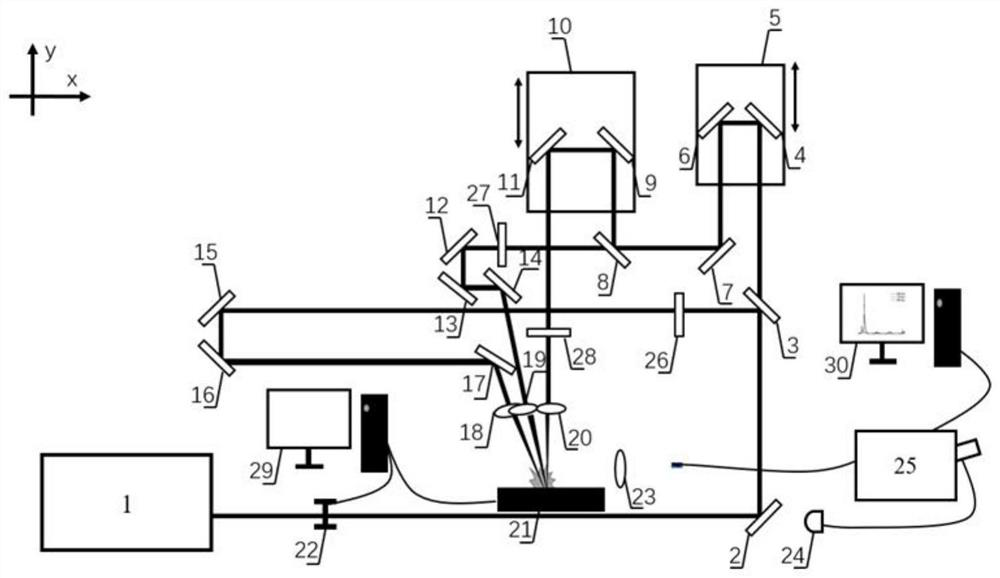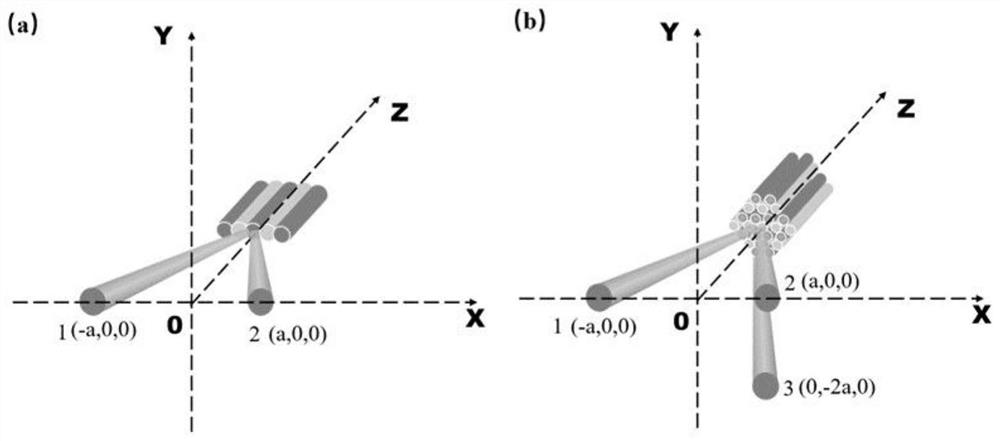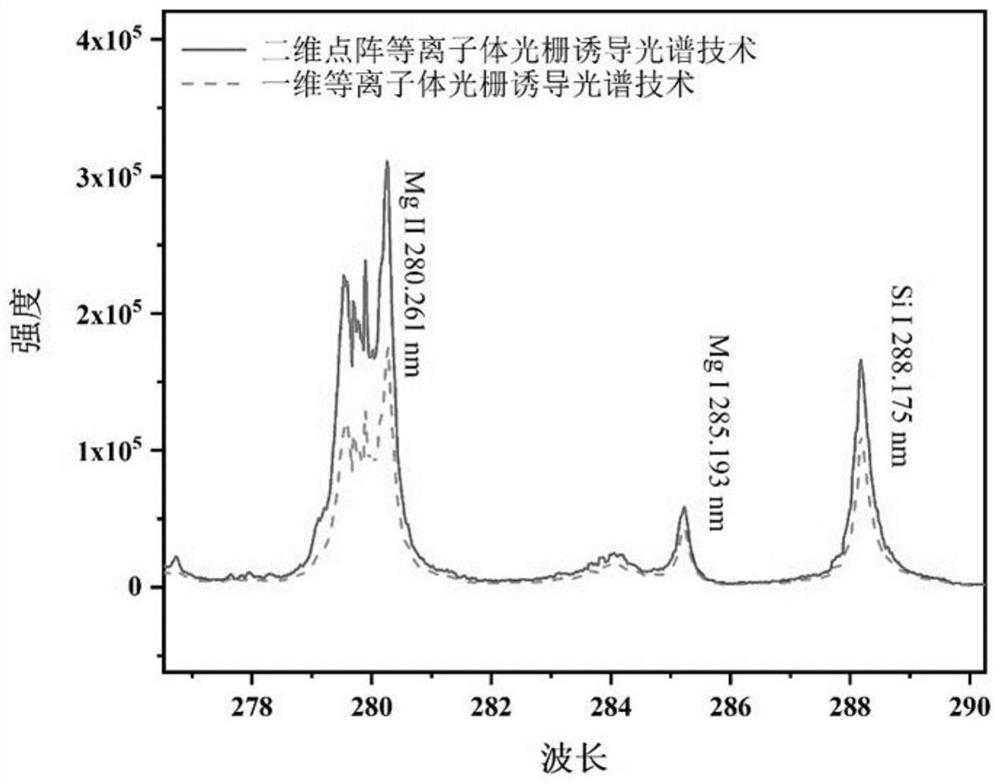Two-dimensional plasma lattice grating enhanced laser-induced breakdown spectroscopy detection sensitivity device
A laser-induced breakdown and plasma technology, applied in the field of spectral detection, can solve the problems of matrix effect and low detection sensitivity, and achieve the effects of improving efficiency, enhancing spectral signal, and improving detection sensitivity
- Summary
- Abstract
- Description
- Claims
- Application Information
AI Technical Summary
Problems solved by technology
Method used
Image
Examples
Embodiment 1
[0048] In order to better understand the position of the three beams of light and the better excitation effect of the three beams of light, the following combination figure 2 Describe in detail. Such as figure 2 Shown is a schematic diagram of a 1D plasmon grating and a 2D plasmon grating pair, where (a) describes the interaction of two beams of light to form a 1D plasmon grating, and a 1D periodic grating appears on the cross section perpendicular to the plasma channel The structure breaks through the optical power clamping effect, and the optical power density and electron density in the plasma channel have been increased by an order of magnitude.
[0049] The figure (b) describes a combination method to form a two-dimensional plasmonic grating, and the beam 1 corresponds to figure 1 In the laser pulse passing through lens C, beam 2 corresponds to figure 1 In the laser pulse passing through lens B, beam 3 corresponds to figure 1 A laser pulse in A. figure 2 (b) Beam ...
Embodiment 2
[0051] Such as figure 2 Shown is a comparison of the excitation lines of the single filament, one-dimensional plasmonic grating, and two-dimensional plasmonic grating for the same soil sample GSS-09. Among them, a lens with a focal length of 20cm is used for focusing. The distance between the lenses used for the one-dimensional plasma grating and the two-dimensional plasma grating is 4cm, and the angle between the corresponding filaments is about 10°, and the period of the grating is 4μm. . The figure compares the intensity of the Si 288.17nm spectral line under the three excitation modes. It can be seen that under the same laser power, time delay, gate width and other parameters, the effect of one-dimensional plasmonic grating excitation is better than that of The excitation effect of single filament and the excitation effect of two-dimensional plasma grating is better than that of one-dimensional plasma grating.
Embodiment 3
[0053] Take the standard soil GSS-9 as the sample, after fully drying, grind and refine, take 0.3g powder and press it with a hydraulic press at a pressure of 8MPa for 2 minutes to obtain a soil tablet sample with a diameter of 13mm for testing. The sample is excited by a femtosecond laser pulse with a wavelength of 800nm, a repetition rate of 1000Hz, and a single pulse laser energy of 2mJ. The spectrometer is set with an acquisition delay of 0ns and a gate width of 200ns for collection. Two-dimensional plasmonic lattice grating and one-dimensional plasmonic grating are used to excite the sample, and the obtained spectral signal intensity is as follows: image 3 As shown, taking the three spectral lines of Mg II 280.261nm, Mg I 285.193nm and Si I 288.175nm as examples, the spectrum induced by the two-dimensional lattice plasmonic grating is enhanced compared with the one-dimensional plasmonic grating.
PUM
 Login to View More
Login to View More Abstract
Description
Claims
Application Information
 Login to View More
Login to View More - R&D
- Intellectual Property
- Life Sciences
- Materials
- Tech Scout
- Unparalleled Data Quality
- Higher Quality Content
- 60% Fewer Hallucinations
Browse by: Latest US Patents, China's latest patents, Technical Efficacy Thesaurus, Application Domain, Technology Topic, Popular Technical Reports.
© 2025 PatSnap. All rights reserved.Legal|Privacy policy|Modern Slavery Act Transparency Statement|Sitemap|About US| Contact US: help@patsnap.com



